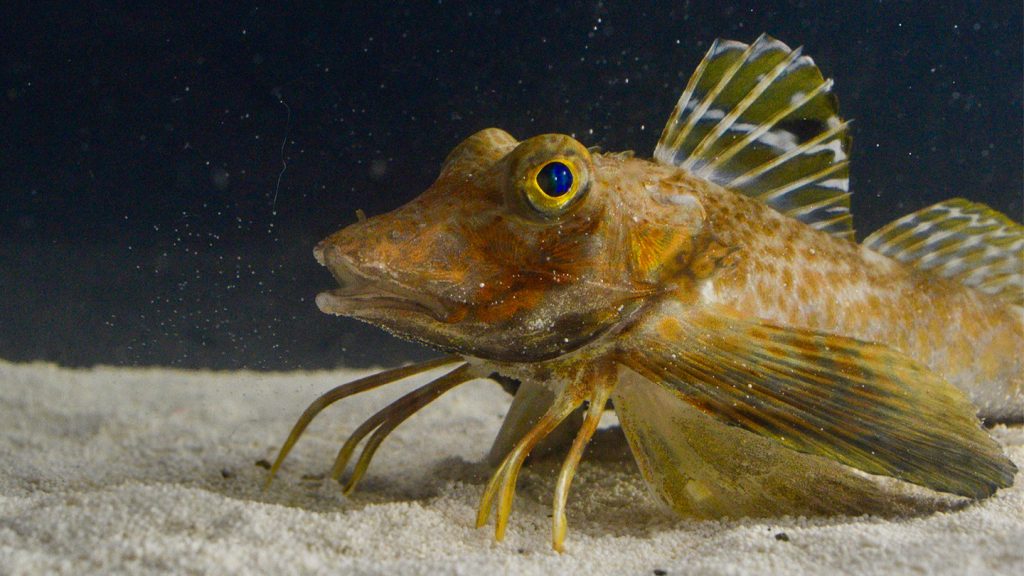Researchers have discovered that some sea robins, a type of fish with winglike fins and crablike legs, use their legs to dig in sand and locate buried prey by developing a sense similar to taste. These findings were published in two papers in Current Biology. Although most sea robins primarily use their legs for walking, a few species have evolved legs that can taste using an ancient gene involved in limb formation in humans and animals, as well as a gene associated with taste bud development. They deduced that northern sea robins have an exterior sense of taste, unlike typical fish with taste buds in their mouths.
The studies conducted by a team of researchers at Harvard University and other institutions involved behavioral tests and close-up images, which confirmed the presence of sensory papillae on the legs of northern sea robins. These papillae act as taste buds, detecting chemicals in the sand to pinpoint the location of hidden prey. The legs of these fish probe the sand, aided by touch-sensitive nerve cells and taste sensors, allowing the sea robins to determine where to excavate for food. These findings suggest that sea robins, particularly those with digging behavior, have evolved as a result of an “evolutionary innovation.”
Genetic and physiological experiments revealed that the papillae on the sea robin legs exhibit high activity of a gene called t1r3, which is involved in mammalian sweet-detecting taste buds. Additionally, an ancient gene called tbx3a played a crucial role in the development of sea robin legs, papillae, and digging behavior. By comparing digging and non-digging sea robins, researchers determined that only digging species had papillae on their legs, indicating that this feature was likely beneficial for detecting food in the sand.
The papillae on the sea robin legs combine taste receptors and touch sensors in a unique manner, distinct from typical tasting mechanisms in fish. Further research is needed to determine if these sensory organs can detect bitter compounds that indicate potential threats rather than food, as well as to explore potential connections between leg and mouth taste bud responses. The team’s innovative approach highlights the intersection of genetic evolution and sensory adaptation in aquatic creatures, shedding light on the remarkable abilities of sea robins to utilize their legs as sensory organs.
The evolution of taste-detecting legs in sea robins illustrates how novel features can arise from existing genetic mechanisms. By repurposing genes responsible for limb development and taste sensing in an innovative way, sea robins have developed a sophisticated mechanism to locate food in the underwater environment. These findings provide valuable insights into the genetic and physiological adaptations of aquatic creatures and open up new avenues for studying sensory perception in marine organisms, offering a tantalizing glimpse into the intricate world of underwater life.


